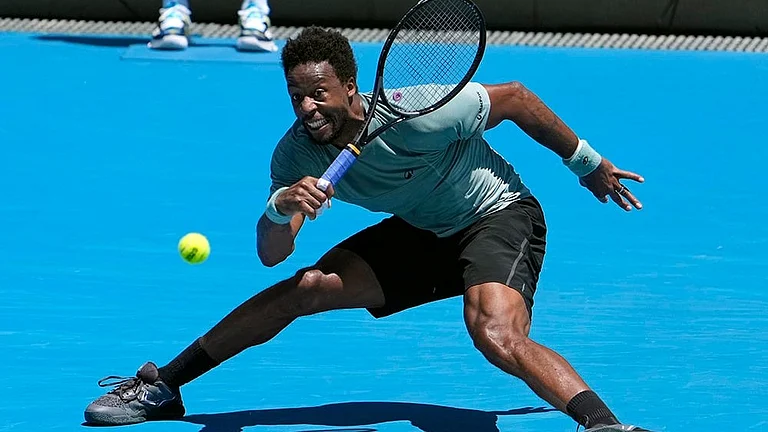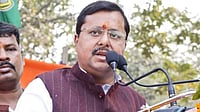POST-'70s social science scholarship and historiography have generated new approaches and insights into different aspects of Indian society. Change, variety and differences have been highlighted under Marxist, New History, post-modern and subaltern approaches. But research on Muslims is still mired within traditional frameworks. Existing categories have been questioned but not changed; consequently, ideas and movements associated with Muslims are classified as 'revivalist' rather than reformist, 'communal' rather than secular,' separatist' rather than nationalist and, finally, 'reactionary' rather than progressive. Thus, Syed Ahmad Khan and his associates are marginalised or dismissed as 'separatist', a derisive label for those who did not conform to the majoritarian view of nationalism. Syed Ahmad's stereotype as the architect of Muslim separatism, mesmerised by the British, remains unaffected by the knowledge of his contribution to introducing rational thought and English education. Similarly, Altaf Husain Hall, Maulvi Nazir Ahmad and Shaikh Abdullah of Aligarh, pioneers in women's reform, find little mention in conventional or unconventional histories. The old explanations are presumed to unravel their conduct; they are all too readily ascribed "reactionary" tendencies. There is still talk of a "Muslim mind", a "Muslim outlook", and an inclination to construe Muslim identarianism around Islam. A sense of Otherness is conveyed thus.
Unchanging perceptions, derived from colonial knowledge and global Islamist assertions, express themselves variously. Time and again one is reminded of the pervasive impact of Islam on its adherents, their enduring transnational links and obsessive concern for Quranic values; one is persuaded their sole preoccupation is praying and visiting shrines. One is also told they, more than others, attach greater value to religio-cultural habits and institutions; hence they are more susceptible--from North Africa to the Philippines--to religious rhetoric. This is a familiar Orientalist view, based on the solidarity of the umma invoked to cultivate specifically Islamic ideas and defend Islamic symbols with vehemence. Thus, Kanpur Muslims protested when a mosque was damaged in 1913, the Khilafat issue caused outrage and interference in Muslim family laws (for example, the 1929 Sarda Marriage Bill) elicited stout resistance.
These are no doubt important facets but should not be over-stated to discern a unified structure of consciousness or picture a community acting in unison; a general acquiescence in the actions of few should not be assumed. What, one may ask, is exceptional if some Muslims, falling prey to colonial definitions and their own fanciful theories, saw themselves as an indivisible component of a religious collectivity:' Other communities had a similar self-image. How else to explain the presence of the Hindu Mahasabha, the RSS and innumerable caste associations: What does one make of 19th century religio-revival movements in Bengal, Maharashtra and Punjab and anxieties over the evangelical threat to Hindu identity? Historian Susobhan Sarkar commented on "the obsession with Hindu traditions which helped to keep the men of our (Bengal) renaissance aloof from the masses". At the heart of the Arya Samaj's brand of reform was the restoration of pristine Vedic culture. The Tilak school' was concerned with much the same. Their leaders were constructively rethinking 'Hindu' heritage to meet modern challenges. The Hindi-Urdu controversy and the cow question were evocative symbols of Hindu resurgence in the land of Aryavarta. Indeed, the crusade for Hindi in opposition to Urdu was as much linked to government employment as a 'Hindu' symbol. Finally, historian Romila Thapar has revealed how the emergent national consciousness appropriated the Orientalist construction of Hinduism--a requirement for political mobilisation and access to economic resources. The Muslim elite did much the same.
MOREOVER, it was all very well to make noises about pan Islamism or delineate the contours of a divinely-ordained community. In reality, this failed to obliterate internal differentiations. Religious bonds endowed a semblance of Unity, but could not override other identities. Muslim groups' traditional links with other social classes, though occasionally strained, proved demonstrably more enduring. Hindu-Muslim ill-will in the '40s weakened but did not destroy these cross-communal ties.
Secondly, a Muslim, like others, has diverse roles to play. He identifies to varying degrees with different groups/figures based on ethnicity, region, profession and so on. At no time is one boundary the sole definer of his identity, though for different issues there is a most relevant boundary that becomes prominent and defines the us/them divide. He has, just as a Hindu or a Sikh, multiple identities. He is a peasant or a landlord, a worker or an industrialist, a Shia or a Sunni, a Deobandi or a Barelwi (as the Vaishnavites, the Shaivites or the Kabir panthis). Should we then harp on his Muslim identity to the exclusion of everything else, including the secular terms in which he relates to his immediate socio-economic needs and his wide interactions with his class? The depth and nature of this interaction may be disputable, but does that justify a discussion in terms of an absolute Muslim/ Islamic consciousness? If, as we are told, centuries of shared experiences could not create composite solidarities, how could a specifically Muslin self-consciousness enlarge from their multiple experiences?
Jinnah believed he had the answers. So did the Jamaat-i-Islami. They stressed the negative, expanded Elements of separation and made it harder to stress other affinities. But there were secular/ pluralist explanations too. Scholars, artists and creative writers, part of liberal-left formations, contested popular definitions of 'Muslim identity' and 'Muslim world-view' accessed through Islamic symbols--unfolding the past to discover elements of unity, cohesion and integration. These scholars carried forward tile inconclusive post-1857 debates where the ulama and the intelligentsia, confronted with the political and religio-cultural threat of colonialism, reflected on weaknesses within a tradition that had strong revivalist precedences as well as liberal tendencies. Key aspects in those debates bore contemporary relevance, relating to the Muslim predicament in a world brutally shattered by Partition.
The intelligentsia-artists and intellectuals-create mirrors through which we perceive ourselves. It is these mirrors that define the boundaries of ideas and institutions. The intelligentsia's role--both as creators of cultural outlook and the product of the milieu--is central to my view of what happened in India generally and among certain Muslim groups particularly.


























